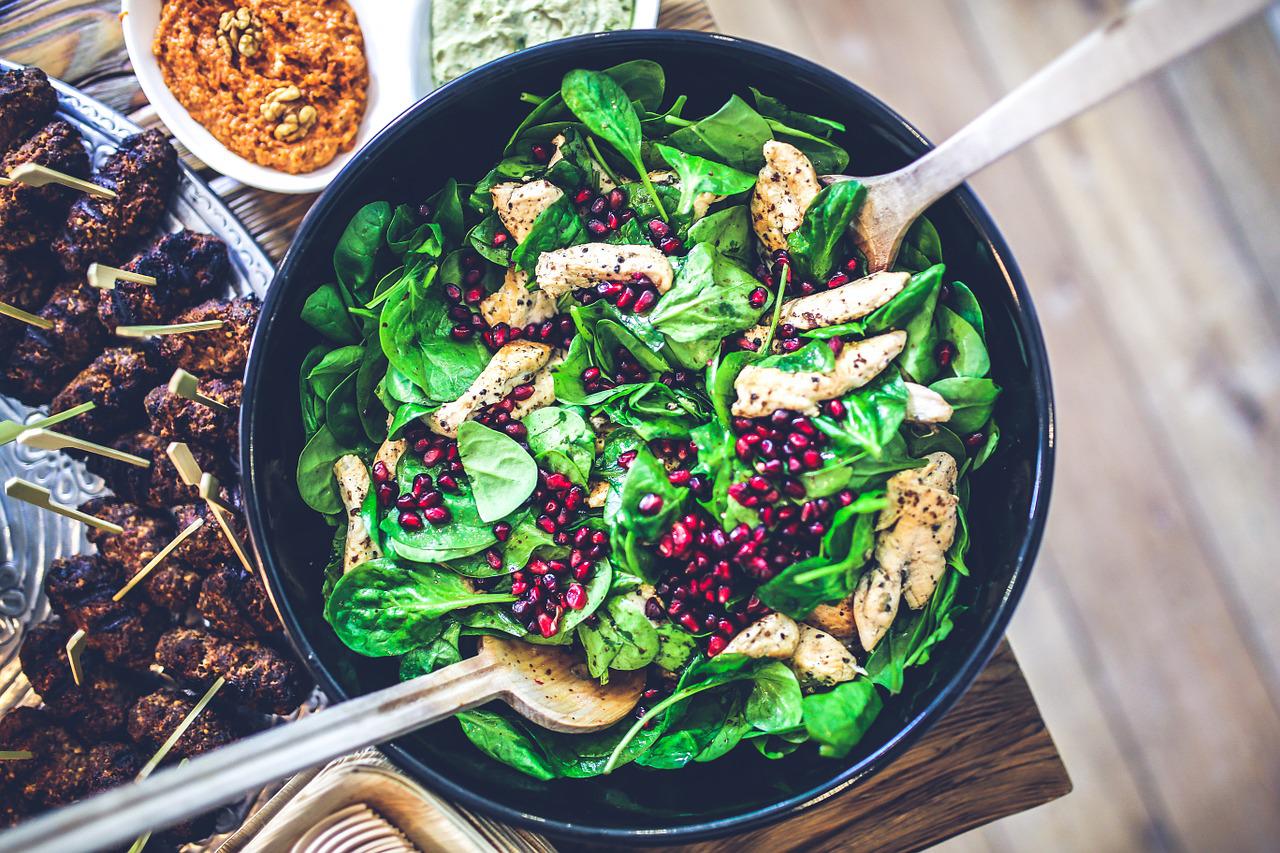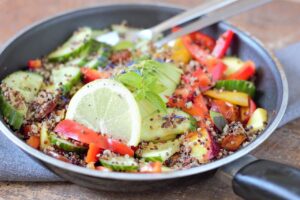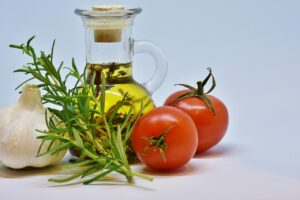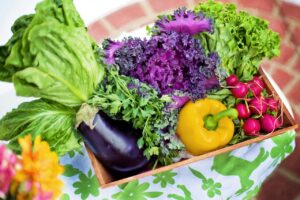Gout is a painful type of arthritis that develops because of a buildup of crystals in and around a joint due to elevated amounts of uric acid in the body.
Purine is a molecule that the body metabolises down to make uric acid. Purine is a naturally occurring substance in the human body, although it may also be found in some foods. Urine contains the uric acid that is excreted by the body.
If you have been diagnosed with gout, you may want to follow a Uric Acid Diet. Diets for gout are not the answer. However, it may reduce the incidence of future gout episodes and decrease the course of joint disease. Even if they follow a Gout Diet, most people with gout still need medications to control their discomfort and reduce their uric acid levels. Here we have also mentioned what to eat in uric acid.
What Role Does Food Play in Gout Treatment?
Gout attacks may be triggered by meals that raise your uric acid levels. Purines, a naturally occurring chemical present in food, are typically included in trigger meals. Uric acid is produced as a waste product when purines are digested.
This is not a problem for healthy individuals since their bodies can eliminate excess uric acid from the bloodstream.
On the other hand, Gout sufferers cannot flush out excess uric acid effectively. As a result, a purine diet may contribute to uric acid buildup and a gout attack. There is good news, too. Research suggests that limiting high-purine meals and proper medicine may avoid gout episodes.
In addition to organ meats and red meats, shellfish, wine, and beer are also known gout-inducing dietary items. Their purine content is between moderate and high. This rule does not apply, however, in one specific instance. Gout attacks are not triggered by high-purine vegetables, according to studies.
Although fructose and sugar-sweetened drinks do not contain purines, they may raise the risk of developing gout and gout episodes. As a result, they may increase uric acid levels by speeding up several cell processes.
People who ingested the most sugar had a 62% increased chance of getting gout, according to one research including over 125,000 individuals.
Studies have shown low-fat dairy, soy, and vitamin C supplements may help prevent gout episodes by lowering uric acid levels in the bloodstream. Uric acid levels seem to be unaffected by the consumption of full-fat and high-fat dairy products.
How does it work?
Most foods high in purines, particularly those derived from animals and shellfish, should be avoided while following a uric acid diet. Purine-rich veggies are safe to eat and do not raise your risk of gout attacks. It would help if you ate plenty of foods high in vitamin C, low-fat dairy, and plant oils to keep your condition under control.
What Foods to Eat to Get Rid of Uric Acid
- As previously believed, gout attacks aren’t exacerbated or even increased by eating purine-rich plants like asparagus, spinach, and cauliflower. Vegetables are an excellent source of fibre, which aids with weight loss and management and a variety of vitamins and minerals.
- According to research, uric acid levels may be reduced by consuming low-fat dairy products. A healthy weight may also be maintained by consuming low-fat foods like skim milk and low-fat yoghurts.
- Tofu, whole grains, beans, and lentils: These plant-based proteins can help you maintain a healthy diet while controlling your illness. It’s important to note that even though you’ll be cutting down on meat and seafood to combat gout, the USDA still recommends consuming 15-30% of your daily calories as protein. Many studies have shown protein and oil derived from plants to be beneficial in preventing gout episodes.
- According to research on citrus fruit, gout flare-ups may be less frequent if you consume 500 milligrammes (mg) of vitamin C daily. Vitamin C aids in the excretion of uric acid from the body, and citrus foods are a good source. Reduce your intake of high-fructose fruits like grapefruit, oranges, and pineapple favouring lower-fructose options.
- Coldwater fish and shellfish have been shown to have greater purine concentrations than other fish and should be avoided by those with gout. There is a greater purine concentration in coldwater fish such as tuna and sardines, along with shellfish such as shrimp and lobster.
- Yeast best food for uric acid extract is used in several popular spreads, including Marmite, Vegemite, and Vitam-R, which are rich in purine due to their yeast extract content. To lower uric acid levels, stay away from these foods.
- Most alcoholic drinks, including beer and wine, are not permitted on a gout diet. Uric acid excretion is slowed by beer and liquor. Gout has been linked to an increased incidence of gout in those who drink large amounts of wine.
- Foods and drinks foods that trigger gout rich in fructose, such as those made with high fructose corn syrup, should be avoided while on a gout diet. Soda and other sugary beverages, canned fruits and fruit juices, and snacks like candies and morning cereals may all contribute to high uric acid levels.
- Consumption of cherries, according to research, decreases blood uric acid levels and may minimise gout flare-ups. In addition, cherries and certain cherry products (such as tart cherry juice) contain significant quantities of anthocyanins—flavonoids with anti-inflammatory and antioxidant characteristics that are useful in controlling the pain and inflammation associated with gout episodes.
- The purine content of red meat and organ meat is more significant than white meat. Gout attacks are more likely to occur if people consume a lot of red meat (beef, deer, bison) and organ meats (liver, sweetbreads, tongue, and kidney).
Uric Acid Foods to Avoid
Uric acid foods are just as crucial as gout-inducing items to keep out of your diet. Listed below are some foods about what not to eat in uric acid.
-
Alcohol
For millennia, drinking alcohol has been linked to gout. Gout and gout episodes are more likely to occur in those who drink often and excessively. Because of this, it is best to avoid specific types of alcohol, such as beer, hard liquor, and grain alcohol.
However, recent studies have indicated that not all alcohol must be avoided while suffering from gout. When consumed in moderation and conjunction with meals, wine may not enhance one’s chance of developing gout.
-
Foods with a high concentration of urea
Gout attacks and recurrences may be minimised by avoiding or restricting meals rich in purines. Patients with gout are five times more likely to get recurring gout episodes after consuming acute purine, according to research published in 2014.
Wild animals, certain shellfish like sardines and anchovies, alcoholic beverages like beer and hard liquor, yeasts, and various meals and drinks rich in fructose and high fructose corn syrup are all examples of foods high in purine.
-
Foods High in Fructose
Among the many sugars found in nature, fructose may be found in various foods like fruit. Fructose, such as the high fructose corn syrup (HFCS) found in several foods and drinks, has been proven in studies to raise blood uric acid levels. Gout may be alleviated by reducing or avoiding foods rich in certain forms of sugar.
Fructose is one of the primary natural sugars found in many fruits. However, the link between gout and fruit consumption is still a mystery. Gout-friendly diets don’t need to avoid all fruit; however, certain fruit juices should be avoided or restricted.
Blood uric acid levels may rise as a result of sugar-sweetened drinks. An analysis of research published in 2020 found a strong link between sugar-sweetened drinks and an elevated risk of gout and hyperuricemia in adults. Gout sufferers should avoid sugary drinks like soda, sports drinks, and energy drinks.
-
Yeasts
If you have gout, you should avoid foods that include yeasts and yeast extracts since they are rich in purines. Vegemite and yeast supplements should be avoided to keep uric acid levels low.
It’s possible to find yeast extract in processed foods like specific frozen dinners and canned soups and stews.
Sample Menu
On a uric acid diet chart, this is what you may consume on a regular day.
Breakfast
- An unsweetened, whole-grain cereal with low-fat milk.
- Strawberry puree, about a cup
- Coffee
- Water
Lunch
- Whole-grain bread toasted with mustard and roasted chicken breast pieces (2 ounces)
- 1-tablespoon almonds, one tablespoon of balsamic vinegar and olive oil, and a mixed green salad
- Water or low-fat milk
Afternoon snack
- 1-cup organic cherry juice
- Water
Dinner
- Salt-bathed salmon (3 to 4 ounces)
- Green beans are prepared in two ways: roasted or steaming
- Olive oil and lemon pepper are added to half to one cup of whole-grain pasta.
- Water
- A low-fat yoghurt.
- 1 pound of melon
- Herbal tea, for example, is a caffeine-free alternative.
Finally,
Inflammation, swelling, and discomfort in the joints are all gout symptoms, a kind of arthritis. Fortunately, a gout-friendly diet may help alleviate its symptoms. In addition to organ meats and some kinds of seafood, various fruit juices, sugary sodas, and alcohol may also cause a gout attack.
The uric acid levels in the blood may be reduced by eating a uric acid control diet rich in fruits, vegetables, whole grains, soy products, and low-fat dairy products. Maintaining a healthy weight, exercising, keeping hydrated, limiting alcohol use, and even taking vitamin C supplements are lifestyle adjustments that can help avoid gout episodes.
FAQs :
-
What should a person eat if they have gout?
In addition to fruits, vegetables, whole grains and low-fat dairy products, the DASH diet includes some fish, poultry and legumes, and some nuts and seeds. A diet reduced to high-purine foods like red and processed meats and sugary beverages is also suggested for gout patients.
-
Is it worse to walk on a gouty foot?
Is it safe to move about when having gout? People with gout may safely stroll. Gout-related discomfort may be reduced by engaging in joint-friendly activities like walking. While the big toe joint is most often affected by gout, it may also affect the ankles, knees, and lower extremities.
-
Gout flare-ups occur on average how many times a year?
A gout episode may last anywhere from a few hours to a couple of days. If you have severe gout, you may only have one or two bouts a year. Chronic gout causes episodes to occur more often and at shorter intervals.
Also Read : All About Gluten Free Diet : Benefits, Foods, Dont’s

















